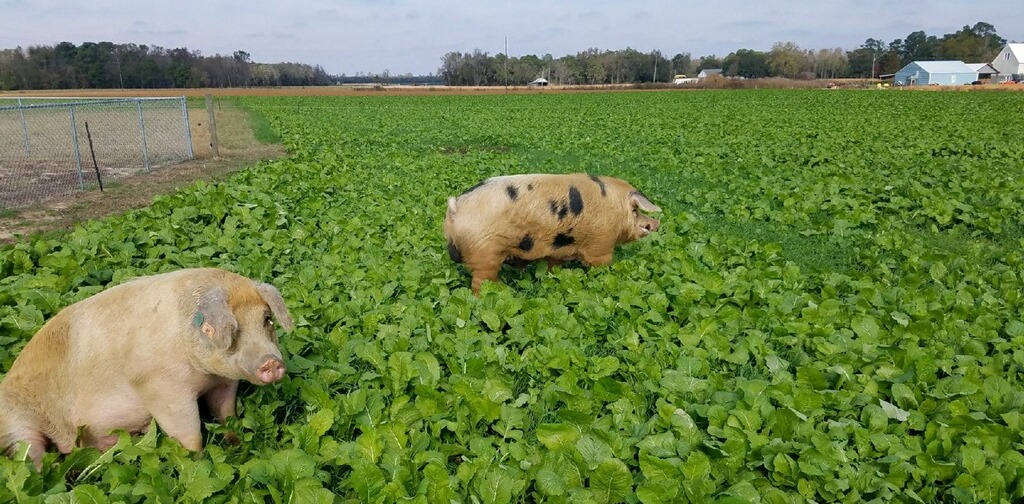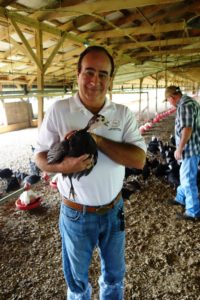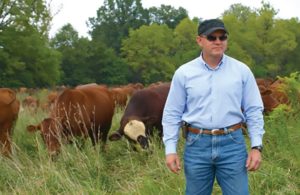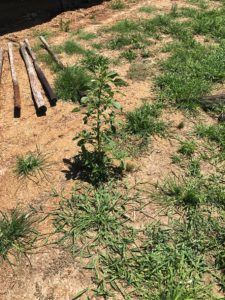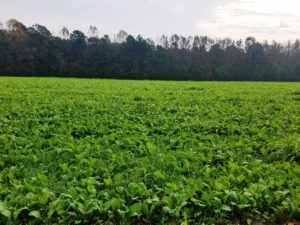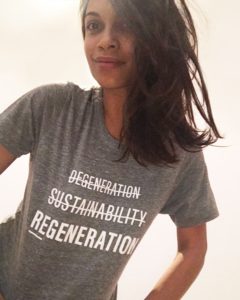Readers of REVITALIZATION have seen many examples of farms and ranches switching from sustainable practices to regenerative agriculture. The move from doing less damage to reversing existing damage (such as soils that have been depleted and contaminated by industrial agriculture) is accelerating.
On April 30, 2018, North Carolina-based Joyce Farms became the latest convert. They are a leading artisan producer of heritage and all-natural meat, poultry and game announced that it has adopted regenerative agriculture as standard practice for its farms.
“We recognize the significant opportunity and role we play in helping restore the land that once was,” said Joyce Farms President and CEO Ron Joyce. “We’ve become practitioners of and advocates for regenerative agriculture and are proud to say it is now the standard for our farms.”
Regenerative agriculture is a farming method that rebuilds soil health, enhances ecosystem diversity, and recaptures carbon emissions from the atmosphere. Farmers rely on nature, using diverse cover crops and planned livestock integration to nourish the soil, and never use chemicals or disruptive practices, like tilling.
These regenerative practices lead to cleaner water and improved water systems, improved animal welfare, restored habitats and wildlife, reduced carbon in the atmosphere, and abundant nutritious food with natural flavor. In other words, all the characteristics described in Storm Cunningham‘s The Restoration Economy (Berrett-Koehler, 2002), the first book to document the rise of regenerative (then called restorative) agriculture.
Joyce Farms Regenerative Agriculture Program is led by Chief Ranching Officer Dr. Allen Williams, Ph.D. Dr. Williams is applying his vast knowledge in animal genetics, humane animal care, holistic land management and environmental stewardship to the program.
He is a renowned expert on soil health and cutting-edge grazing methodology. Allen holds a BS and MS in Animal Science from Clemson University and a PhD in Livestock Genetics from LSU. He serves on the board of directors of the Grass Fed Exchange and the Mississippi Sustainable Agriculture Network, and he is a core team member of The Pasture Project, a partner in Soil Health Consulting, LLC, and a co-investigator for Team SoilCarbon.
With one-third of greenhouse gas emissions resulting from global food production, change is necessary. Over time, modern farming practices have resulted in over-tilled land that has inadequate recovery time between crop rotations. Rainfall simply runs off, causing flooding, erosion, and contaminated water.
In a May 8, 2018 email to REVITALIZATION publisher Storm Cunningham, Ron Joyce said “We have been discussing Regenerative Agriculture for a couple of years, but are now moving all of our pastures to this method of production. The most dramatic transformation we have had so far was at our pork farm. The family who owns and operates this farm has been raising pastured pork for three generations and were very skeptical about the changes we asked them to make. They reluctantly did it because they wanted to be involved in the introduction of our Old Spot pastured pork program and it was one of our requirements.”
“The results have been so impressive that neighboring farmers asked to learn more about the process. Allen and his partners in the Soil Health Academy recently conducted a three day intensive seminar near their farm that was attended by over 20 farmers,” Joyce enthused.
“Beside no tilling, Regenerative Agriculture requires planting a polyculture rather than a monoculture. Our forage mix on the pork farm includes grasses (rye, oats, wheat, ryegrass), legumes (clovers, vetch, cow peas, spring peas), forbs, and brassicas (kale, collards, turnips radishes). We are in the process of converting our cattle finisher, who was already partway down the Regenerative path,” Ron added.
He concluded, “In addition to the improvements to our soil health, our forages, and our environment, our farmers benefit financially from the reduction in input costs, improving their bottom lines. Old habits are hard to break though, especially recreational plowing!”
Joyce Farms is committed to helping drive change by building awareness for regenerative agriculture among consumers and industry.
The company recently partnered with Kiss The Ground, a 501(c)3 organization in California committed to public engagement and global soil restoration, through sponsorship of a short documentary film.Kiss The Ground seeks to educate a general audience on the practice and importance of regenerative agriculture. The film will be co-sponsored by The Savory Institute and will be produced this spring.
Ron Joyce and Dr. Williams shared their insights on the future of regenerative farming during Baldor Specialty Foods’ biennial celebration, BITE. The event was held on May 2, 2018 in New York and attracted more than 3000 chefs, restaurateurs, farmers and retailers.
“If we continue using industrial and even sustainable organic farming methods, we are threatening both the long-term availability of the land to farm as well as our overall health,” added Joyce. “Regenerative agriculture practices can quite literally regenerate the land by rebuilding the soil, leaving it far better than our generations found it.”
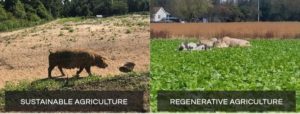 Established in 1962, Joyce Farms is family-owned business providing meat and poultry of the highest quality and flavor to chefs, butchers and consumers nationwide. Joyce Farms is best known for using traditional agricultural methods and old-world heritage breeds, like their renowned Poulet Rouge Fermier™ chicken (GAP Step 4).
Established in 1962, Joyce Farms is family-owned business providing meat and poultry of the highest quality and flavor to chefs, butchers and consumers nationwide. Joyce Farms is best known for using traditional agricultural methods and old-world heritage breeds, like their renowned Poulet Rouge Fermier™ chicken (GAP Step 4).
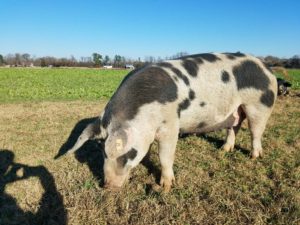
Sow in pasture prior to regenerative practices. The photo at the top of the page shows the same field after regeneration.
Joyce Farms currently offers a line of Heritage products that includes Poulet RougeTM chicken, Poulet RougeTM poussin (young chicken – GAP Step 2), pintade (French Guinea), white pheasant, Spanish Black turkey, Aberdeen Angus cattle (GAP Step 4), Gloucestershire Old Spot pigs and American Frontier bison.
They also offer a Naked (Nothing added ever) line produced without the use of hormones, antibiotics, animal by-products or anything artificial; it includes chicken, duck, and rabbit.
All photos courtesy of Joyce Farms.

